Northern Peru really wasn’t doing it for me, especially on the coast. I found it flat, dirty and uninspiring, and was looking for a change of scenery. I stopped in Chiclayo for a couple of nights, mainly to see the Huaco Chotuna, but there wasn’t much else there that compelled me to stay.
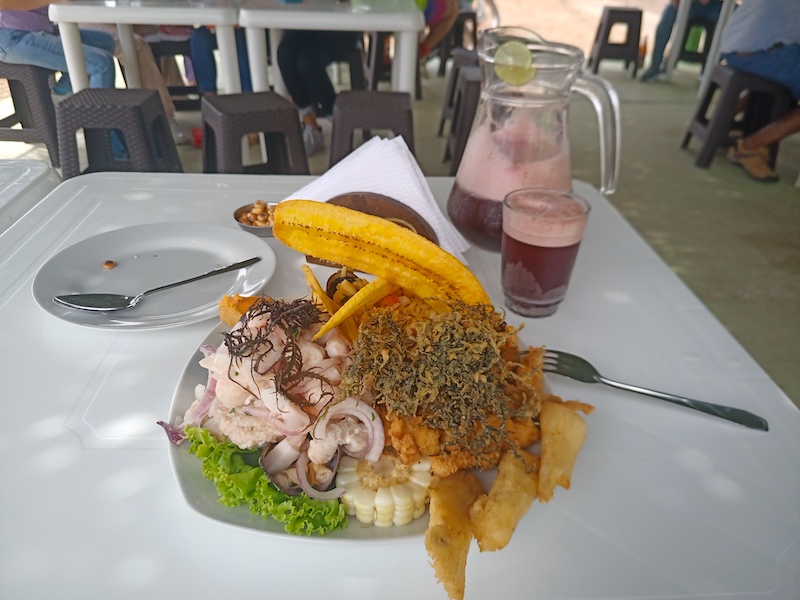
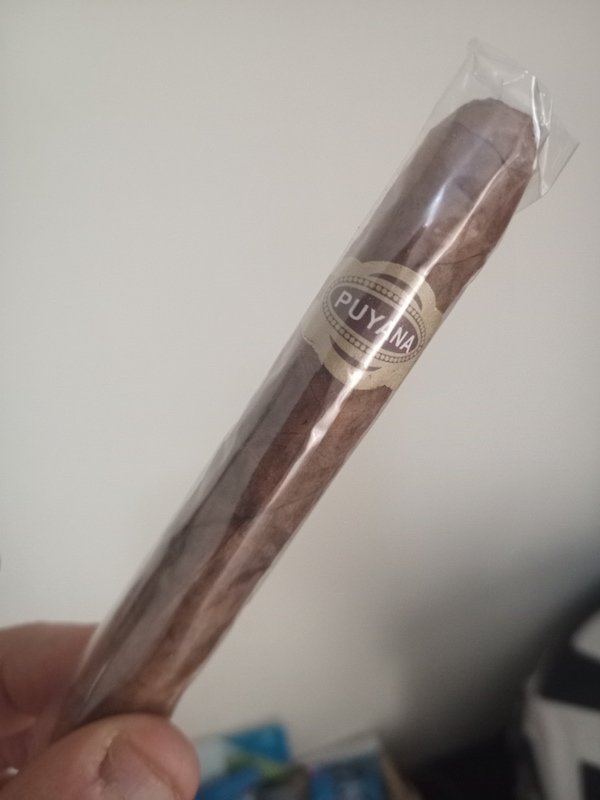
The Huaca Chotuna is a complex of structures built by the Lambayeque people, who lived in the area between 700-1300AD. The main building is a stepped pyramid with a central ramp that wraps around one side. The pyramid is about 40m in height and gives some great views over the largely flat coastal country from the top.
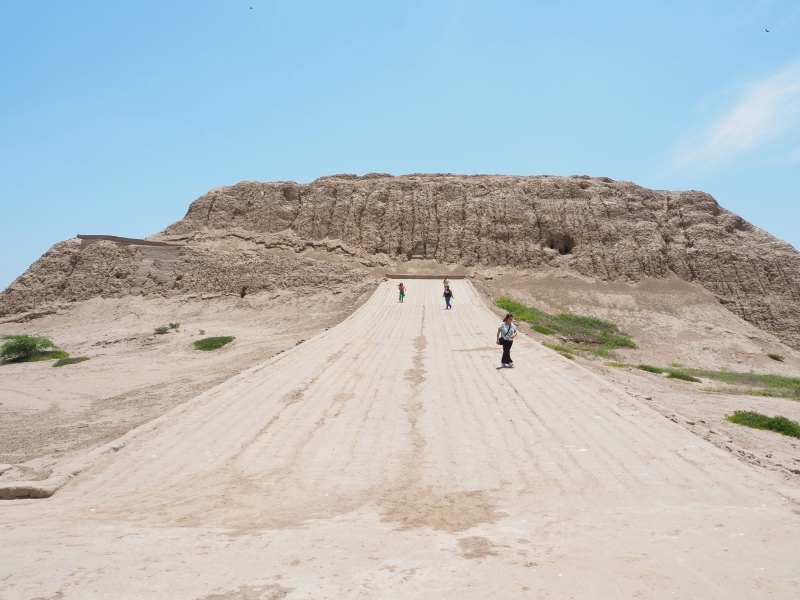
Nearby, there are other structures that were used for various purposes, such as workshops and meeting places. There is also a mound that contained the tomb of a woman known as the the Priestess of Chornancap.
A small museum on site has some interesting murals and models, and does a good job of telling the story of the Lambayeque people and the Chotuna-Chornancap settlement, including the priestess’ important role in society.
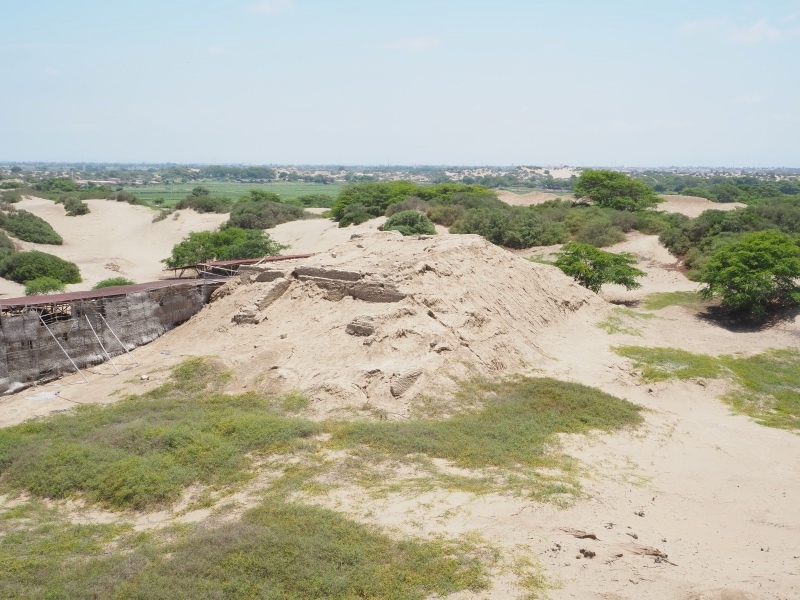

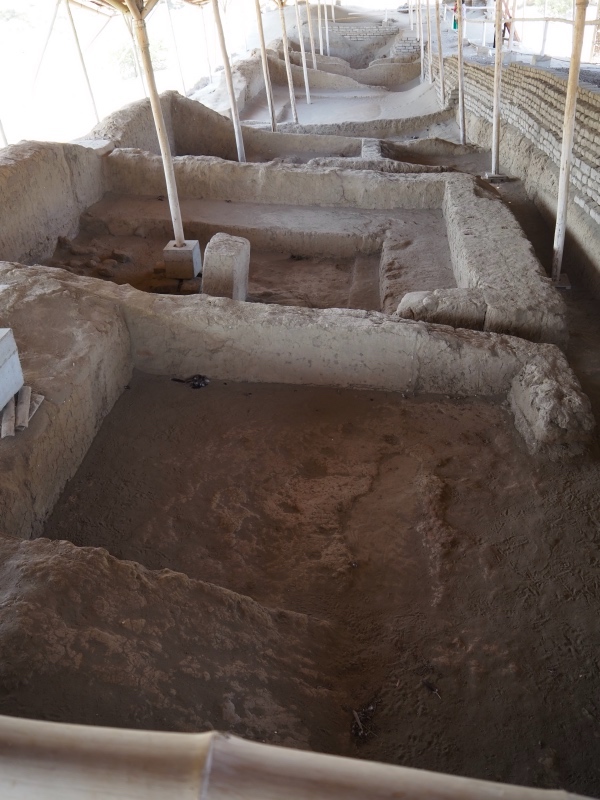

Afterwards, I wandered into the nearby town of Lambayeque to check out the Museo Arqueologico Nacional Bruning. The museum was was founded in the 1920s by German-born ethnologist, archeologist and collector Hans Heinrich Bruning, who spent many years studying the Indigenous people of Peru.
Bruning was an avid collector of artefacts, and the museum is crammed full of them. Everything from pottery to carvings to gold jewellery and ornaments. It is all well presented and preserved, and gives a great window into Peru’s history before the Spanish arrived.
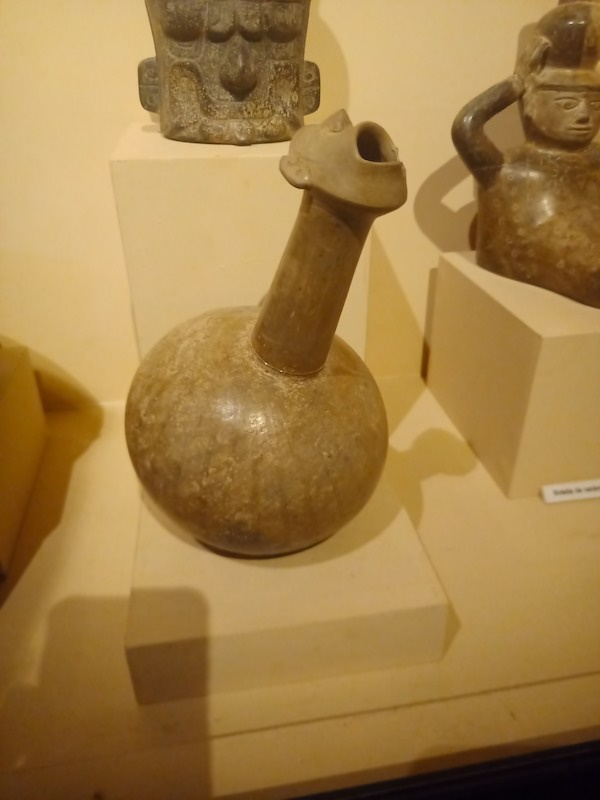

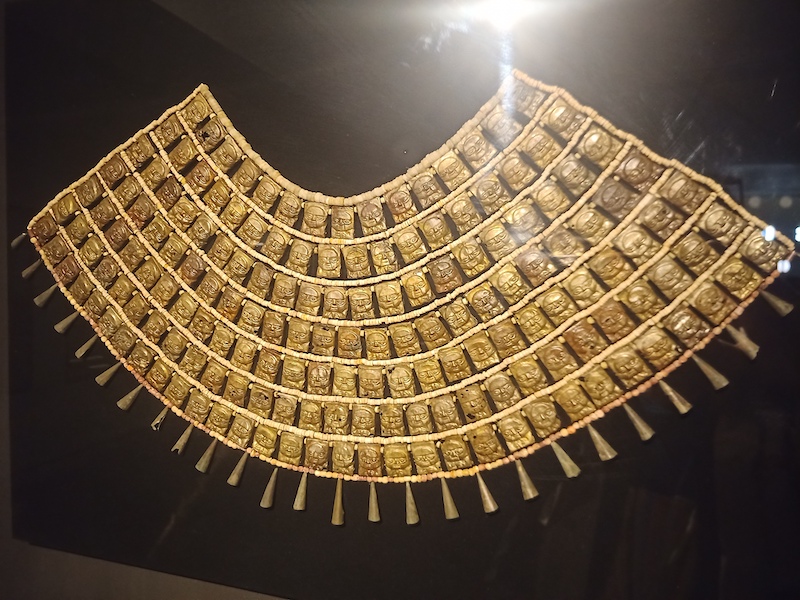
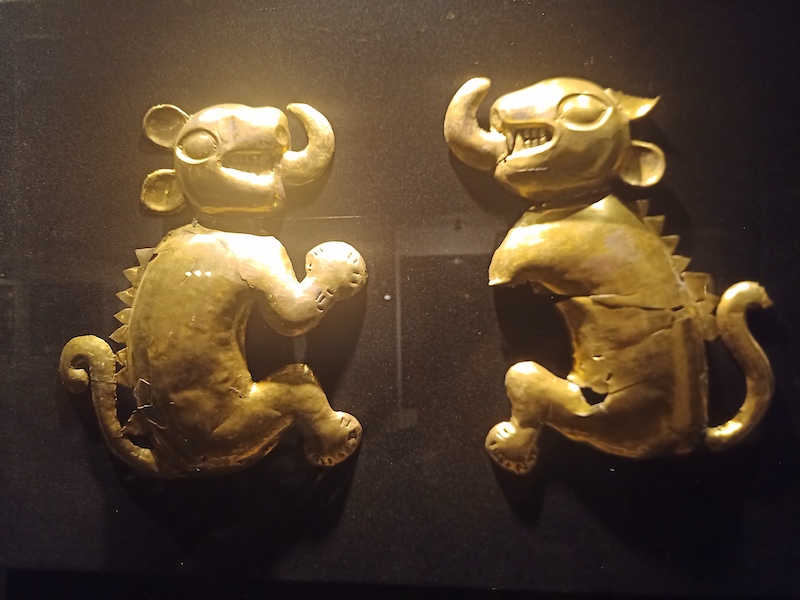


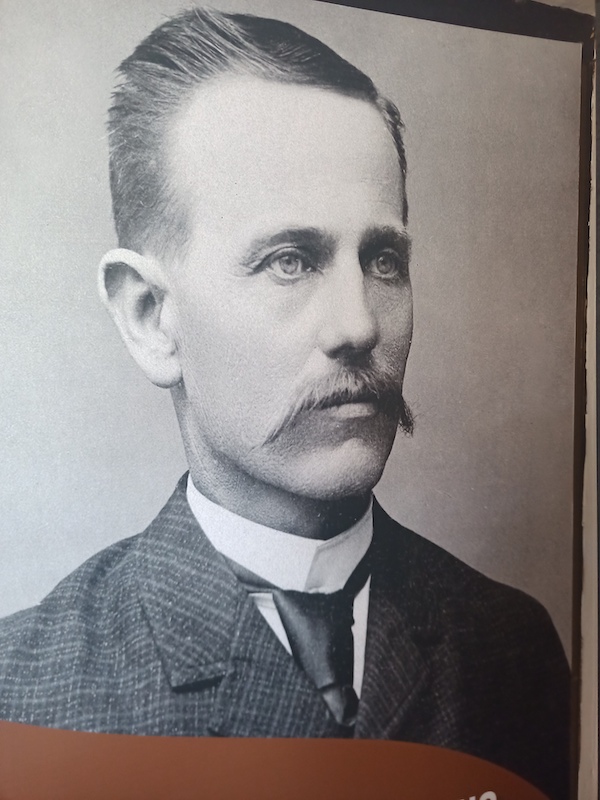
Returning to Chiclayo after the Bruning museum visit, I thought it might be a good idea to get the bike washed. It was cheap, but a complete waste of time.
No gripes with the quality of the wash. The lads at the lavado de autos were super friendly and did a thorough job. It was all in vain, though. Just like what happened after the last wash in Bolivia, the very next day I encountered mud and rain, and lots of it, and the bike was filthier than it had been before the tub.
I have learned from these grave errors. The bike hasn’t been washed since. I rely now on natural methods – frequent lluvia, as it is rainy season here now – to keep the WR looking respectable.
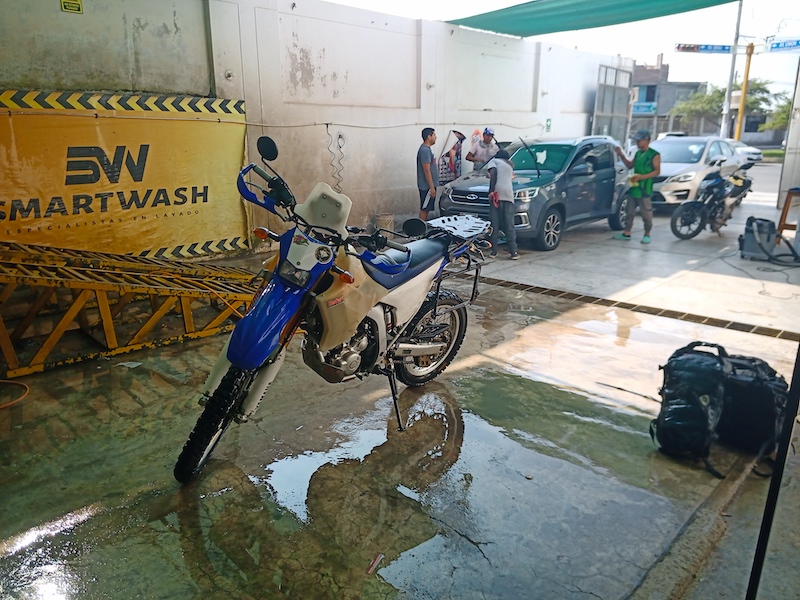
First stop was Jaen, and the ride there was a beaut. Along with the great roads and amazing scenery, I encountered landslides and frequent blockages, with a 5km-long traffic jam of trucks, buses and cars at one choke-point.
Being on a bike does have its advantages. At all the jams, I simply rode to the front with all the other motorcyclists and was usually able to squeeze through, around or over the blockage, leaving the poor four-wheelers queueing for their turn to file past or waiting for earthmoving machinery to clear the way.
At one point, a bus got bogged as it tried to negotiate a landslip. The front end almost got through, but the back wheels became stuck in the metre-thick layer of mud and dirt spilled across the road. An army of willing helpers – many of them passengers – tried pushing the bus free, but their efforts came to nought. An excavator was more successful, eventually dragging the stricken coach free.
Further down the road, where there were more landslips and more mud, I wondered if they were only going to be stuck again.
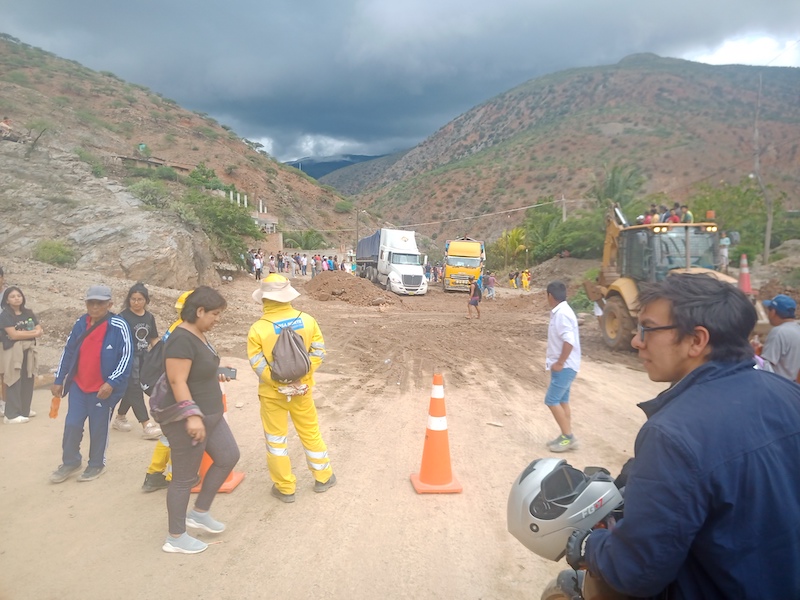
Jaen is a busy, but largely unremarkable place. It does have a huge number of motorcycle shops, which were clustered in the neighbourhood of my hotel. Also nearby was the Hakuna Tiki Bar – a Hawaiian-themed watering hole that is about the last place you would expect in this part of Peru.
They served wicked pisco sours. Those things creep up on you, as I found when I left the bar after enjoying three. My head was fine, but my legs were doing their own thing. Luckily, the hotel was just a couple of blocks away.

Next day I headed to Namballe on wonderful, sinuous roads through jungle-clad mountains. I intended to stay one night before hitting the La Balza border crossing first thing. More a big village than a town, Namballe doesn’t look that special, but I found it idyllic.
Maybe it was the setting, snuggled in those jungle mountains, with coffee plants and banana trees in the occasional cleared spaces. Maybe it was the friendly people. Maybe it was the whole, sleepy vibe of the place. All of the above and more, I suspect. I stayed an extra night.

Soul food
I am sitting outside Mala Fama, a billiards room cum bar in Namballe. No billiard tables to be seen, but there is cold beer in the fridge.
An old lady sits in front of her house next door, carving slices off a fat mango with a huge knife.
Chickens stroll nonchalantly across the road from the plaza de armas.
A golden retriever sits next to a mototaxi, an occasional scratch its only movement on this humid, somnolent late afternoon.
All around, steep hills encircle the town, thick with emerald foliage.
People sit outside their houses, chilling and soaking up the lazy ambience, while also adding to it.
This is a friendly place. Everyone says hello and good afternoon. Everyone seems relaxed.
Down at the soccer field, a few kids are kicking around, while a group of ladies and teenage girls enjoy an enthusiastic game of volleyball at the neighbouring court. But not too enthusiastic. No one looks like they are playing to win. It is all about the rallies.
Midges bite my feet. Unless they are really small mozzies. Hope I don’t get malaria.
Everyone looks quizzically at me as I sit on a small plastic stool enjoying a beer. In a small town where everyone knows everyone else, the gringo stands out like the proverbial.
A good place to end my Peru visit. Tomorrow Ecuador.
On my second day in Namballe, Frank, Nynke and Lukas showed up. They had been a day or so behind on the road and my decision to stay on allowed them to catch up. It meant we could all cross the border together, which may or may not have been a good thing as events transpired.
Within a couple of hours of arriving in Namballe, Frank had the tools out and was making repairs to his KTM 500 EX-C in the street outside our hostal. The bike is a 2017 model he purchased nearly new in South Africa and he has clocked up a staggering 200,000km on it.
There is always something that needs doing on a bike so well travelled, and especially on a KTM. They seem to need more TLC than their Japanese counterparts. KTM’s slogan ‘Ready to race’ could just as well be ‘Ready to repair’.
When I met Frank in La Paz, he was fitting new piston rings to the battle-weary warrior. He gets bored if there are no mechanical tasks required, so it is just as well his KTM gives him plenty to do.

My Yamaha is low-maintenance compared with the orange Austrian, and with nothing required at that time, I spent an hour or two chatting with Frank while he worked and cracking jokes about the KTM’s need for constant attention.
We were all heading to Ecuador next day, with the border just 6km up the road. I had heard the crossing was relatively easy, but could take some time. Apparently the crossing’s remote location meant communication links between the Ecuadorian post and head office weren’t very reliable. How true that would be.
Time has a different meaning in South America. I had read the border crossing would be open fro 8.30am, so we rocked up to the Peruvian side just after 9am to find the immigration office closed. As we were talking with the aduana representative, the immigration lady came strolling over from her house across the street.
In a couple of minutes she had the office open, the computer on and was ready to process us through. We were the only customers. It’s not a highly trafficked crossing, so the relaxed approach to office hours is understandable.
Immigration took us about five minutes each and aduana about the same. By 9.45, we were done with Peru and crossing the bridge over the Rio Canchis to Ecuador. I didn’t know much about Ecuador and had no expectations, but the contrast between the two sides of the border was surprising.
On the Peruvian side, La Balsa had a nice asphalt main drag lined with shops and restaurants. It’s a small village, but there was a sense of order. The Peruvian authorities worked out of solid, air-conditioned offices with plenty of signage and even a bit of landscaping around them.
The Ecuadorian side – also called La Balsa – was a single muddy dirt road with a row of tired and grotty buildings on each side. These buildings housed one shop, some houses, a couple of eateries and the offices of Ecuador’s immigration and aduana services.
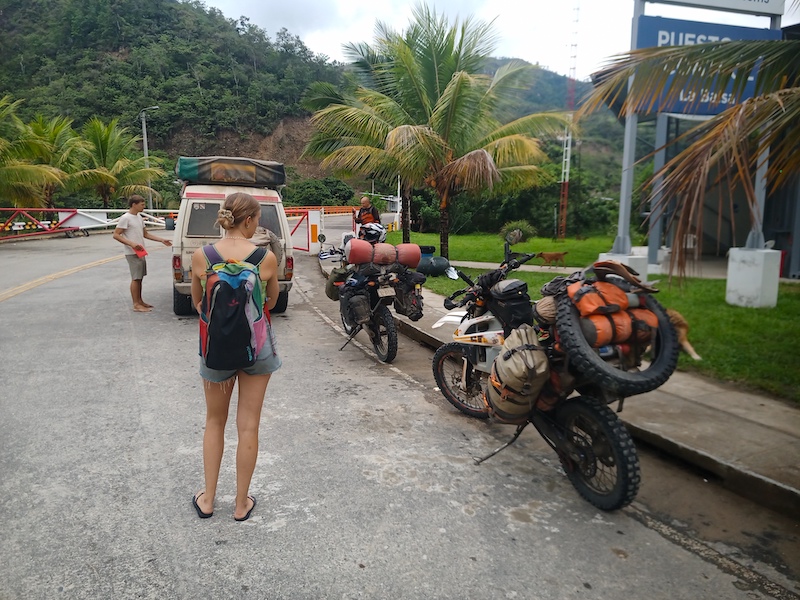
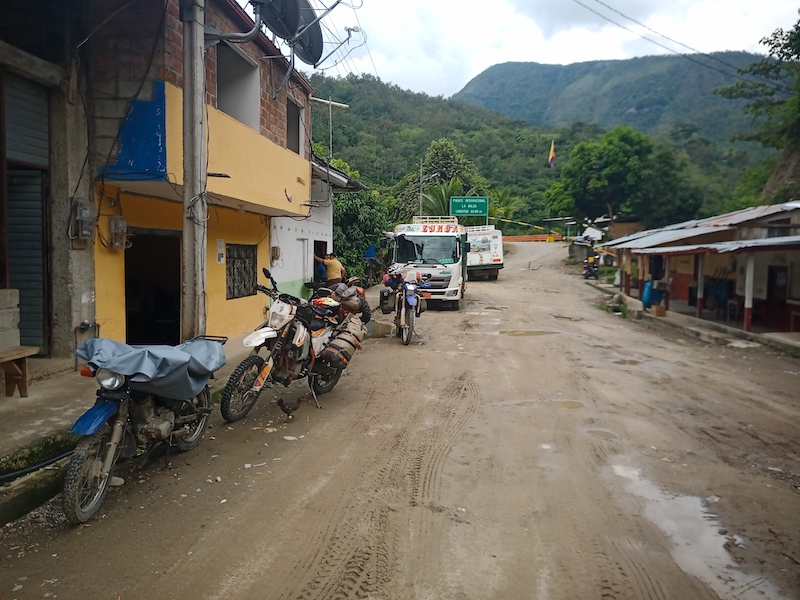
Immigration was quick. In a shopfront office with a cracked linoleum floor and faded, peeling yellow paint on the walls sat a dour bloke wearing a crumpled, short-sleeved collared shirt, jeans and thongs. He was ensconced behind a brown, imitation woodgrain desk from the 1970s, topped by a computer that looked at least a decade old.
The bloke was polite, but not exactly chatty. He processed us into Ecuador with efficiency and I was hopeful of a speedy crossing. Again, we were the only clients.
Aduana was two doors up. Another drab, shabby office. Another ancient computer on an equally ancient desk. The walls were streaked with dirt and the air was redolent with old, stale cooking smells.
Two friendly chaps greeted us and jumped in to the task of admitting our vehicles to Ecuador. We handed over passports and registration documents, they typed stuff into the computer, photos were taken of the bikes and 4WD, and then… nothing.
Turns out the aduana guys didn’t have the authority or facilities to action our vehicle permits themselves, so all our details had to be sent to the regional office for processing. On top of that, despite two shiny new and hefty satellite dishes on the building’s roof, the internet connection was inconsistent and painfully slow. Much of the procedure seemed to be done by WhatsApp, along with a whole lot of questions to head office from the two officers, who appeared to be new to the job.
After waiting around hot and bored for three hours, I was overjoyed to get my temporary import form, only to discover head office had filled it out incorrectly. They put the bike’s engine number where the model, rego number and make were supposed to be, which meant the whole process had to be started again.
Looooong story short, it took more than five hours for the four of us to be processed. And we were the only people bringing vehicles through that day.
We got away a bit after 3.30pm, with more than 100km to go to our planned overnight stop in Vilcabamba. The first 50km was on a dirt road, and what a road it was, snaking its way up hill and down dale. Sometimes precariously along cuttings with jungle on one side and a view on the other. Sometimes through lush valleys where space for crops and stock was hacked from the everpresent forest. Sometimes through little villages which were like those in Peru, but much neater and tidier.
It was slow going. Nynke and Lukas’ old diesel LandCruiser is no speedster, but the the road also demanded patience and caution. I didn’t mind a bit, as the views were gorgeous.
We hit pavement eventually – a ribbon of concrete that swooped and snaked a path through the mountainous landscape. At one point we climbed to more than 3500m, a long slow ascent that had the little WR revving gamely in as low as 2nd gear to make it up. There were roadworks too, one with a tricky, rock-filled water crossing that had to be negotiated in the dark, as the day had left us behind.
Tired and worn out, we hit Vilcabamba after 8pm and were welcomed into the home/hostal of Yeleny, who rents out a couple of spare rooms to visitors. Only one room was free, so Nynke and Lukas took that, while Frank and I bedded down in our sleeping bags on sun lounges by the backyard pool. They were surprisingly comfortable and I was zonked within minutes of laying down.

Vilcabamba is a pretty town with a bohemian vibe. There weren’t many foreign tourists, but quite a few expat residents. They seemed to be mostly from the US, mostly retirees and mostly old hippies.
Ecuadoris’s currency is the US dollar, and the cost of housing and living is probably a lot cheaper than in the Land of the Free. Chuck in lovely temperate weather and a beautiful environment, and you can’t blame the old beatniks for flying south.

Nynke and Lukas lit out for Guayaquil after one night as they had a flight to catch to the Galapagos Islands. Frank and I decided to stay, and moved into a room when its previous guests checked out. Yeleny was a great host and refused to charge us for the night on the sun lounges, so we had quite a cheap two-night stay.
In the afternoon, I mentioned to Yeleny that we were keen for a cold beer and could she recommend a place nearby? “We go together, I take you” was her reply and the next thing I know Frank and I were being bundled into her car and driven out of town.
The destination was about 10 minutes away – the Sol del Venado (Sun of the Deer) brewery, owned by Yeleny’s friend Ivan. Behind his parent’s home, he has set up a rather nifty little operation using the region’s pure mountain water and as many other Ecuadorian-sourced ingredients as possible.
Ivan welcomed us like old mates and proceeded to give us a tasting tour of his beery products along with an explanation of the whole brewing process. He has the set-up to brew about 1000 bottles a week, and sells his beer throughout Ecuador. And he plans to increase that capacity with more equipment in the near future, to tackle the export market.
One unexpected ingredient in Ivan’s brews is cannabis. He makes a beer using weed high in CBD. CBD is the medicinal compound, not the component that gets you baked (that’s THC). It was a rather nice drop, reminiscent of a pale ale or IPA. Ivan reckons ganja will soon be legalised in Ecuador, and when that happens he’ll start brewing with THC-heavy weed as well. That could be one to look out for…
Over a couple of hours we sampled all of Ivan’s beers – he also does a lager, a red ale and a dark ale – plus cannabis whiskey. The whiskey is distilled from the leftovers of the brewing process, and even has a very light greeny tint. Tasted bloody good, too. It’s not for sale, though – personal consumption only 😉
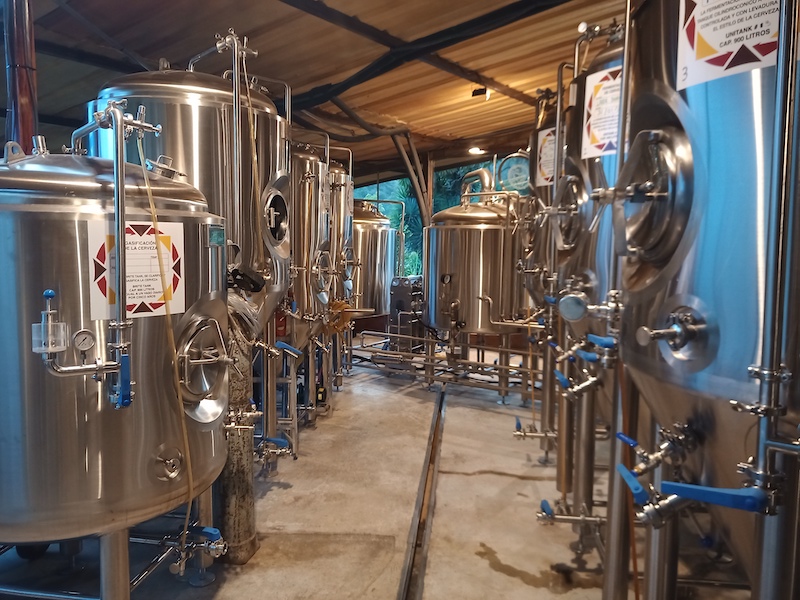
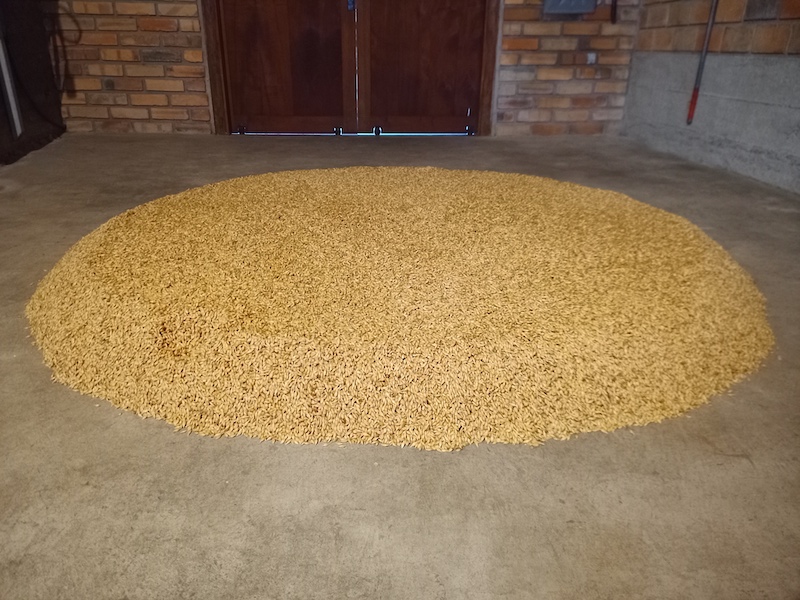
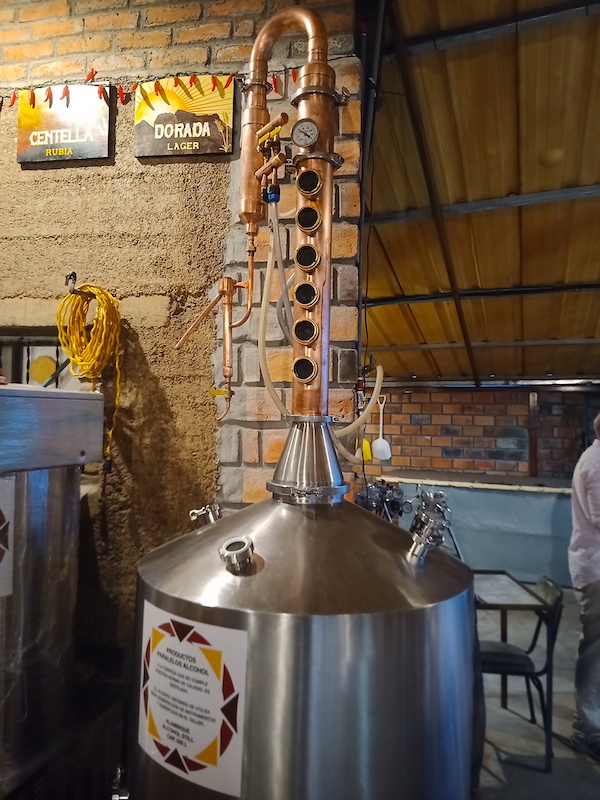


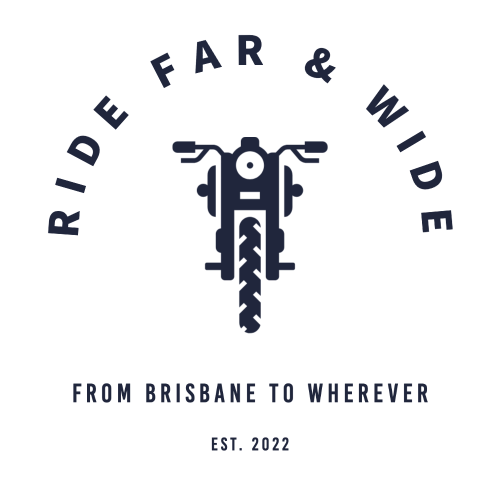
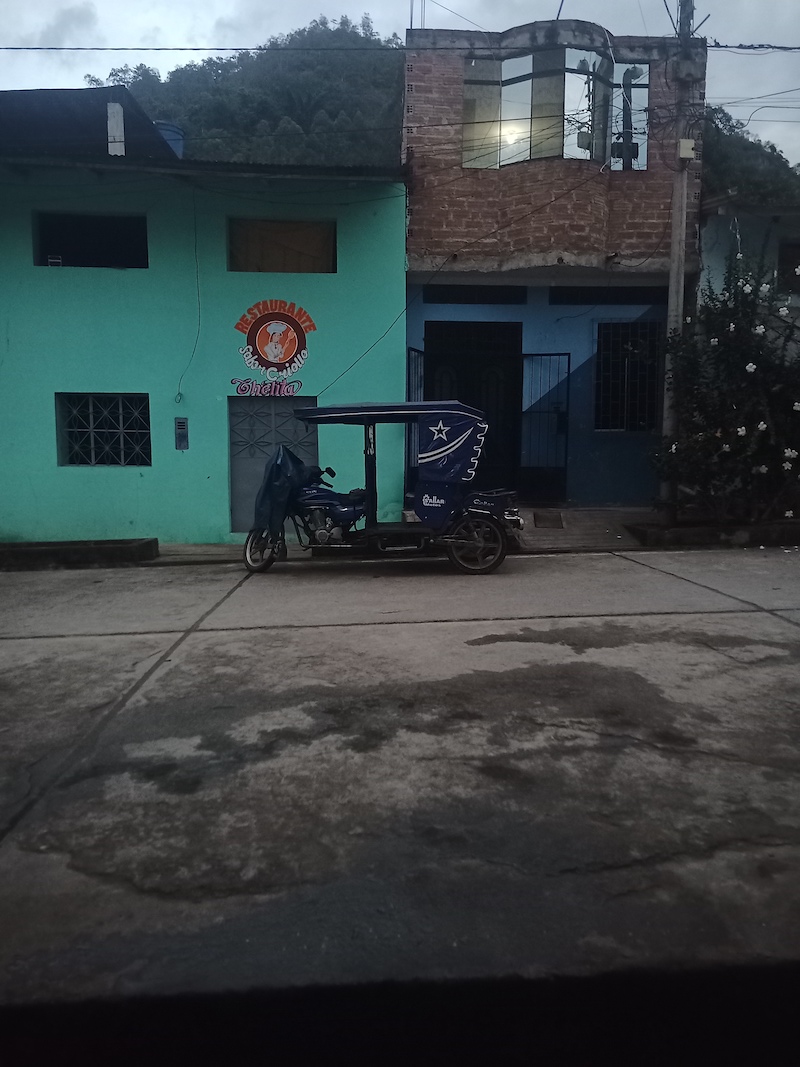
Comments
5 responses to “Farewell Peru, hello Ecuador”
Brilliant! Cannabis whiskey……..there is a god!
You’re certainly experiencing South America in its truest form.
Reading with equal degrees of envy and admiration Pete, great stuff.
Cheers Perry. Great to hear from you, and appreciate your interest.
Loving the blog Pete! Asking for a friend, did you pick up a couple of bottles of whiskey for Greg and myself? 😀
Cheers, Scott. Unfortunately, it was a negative on the takeaways for the whiskey. Could have done with a couple of bottles for later.